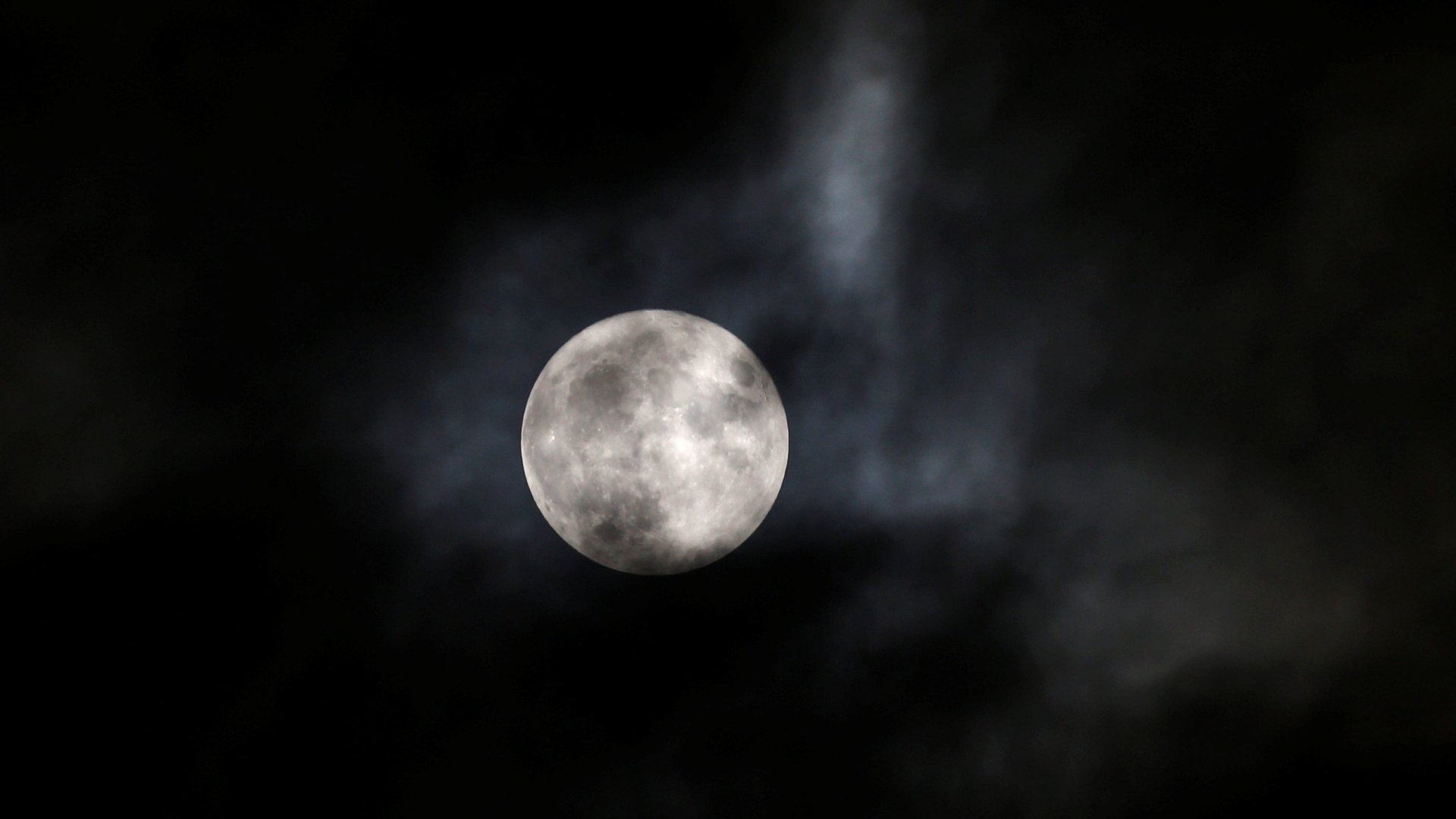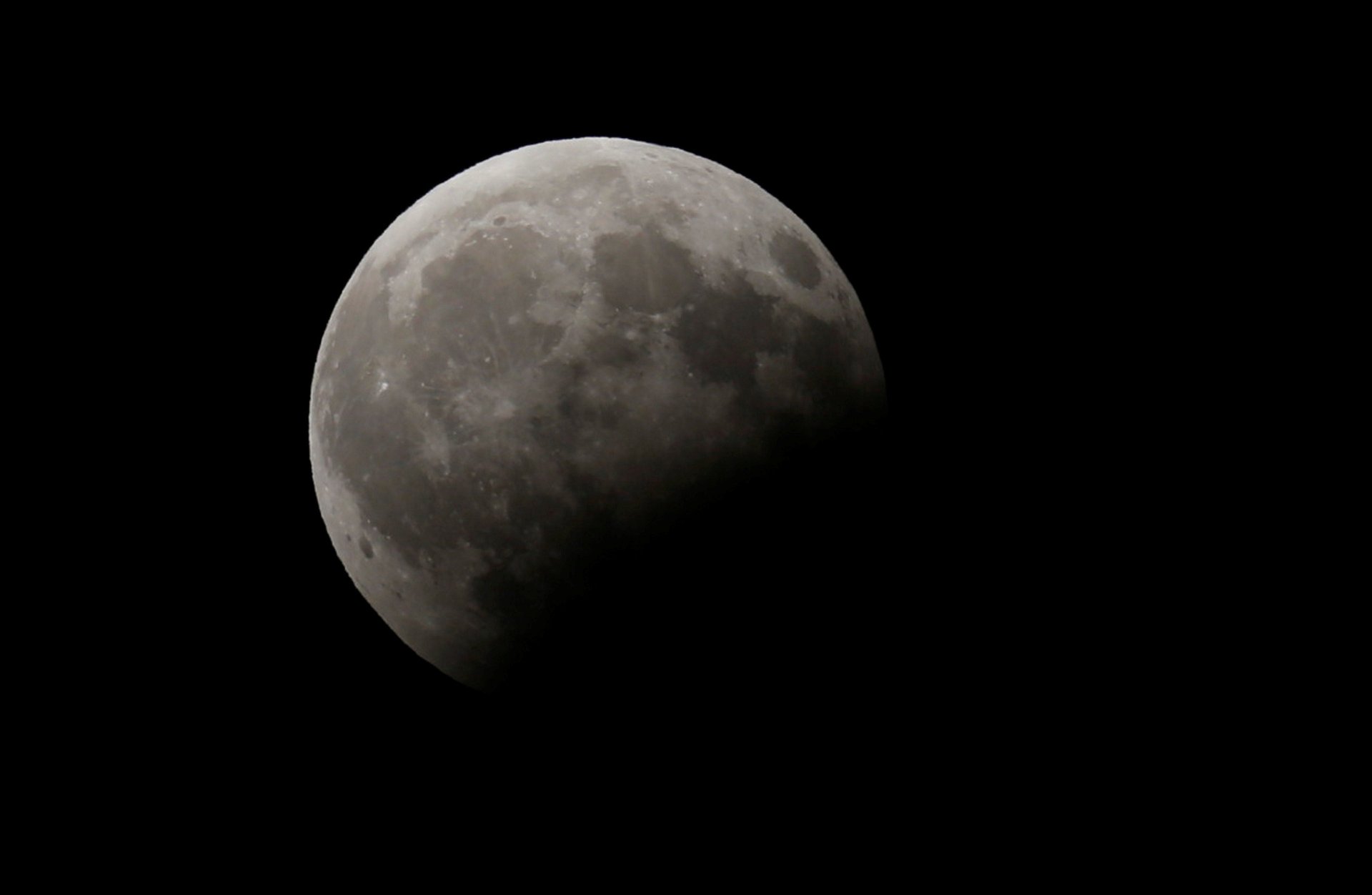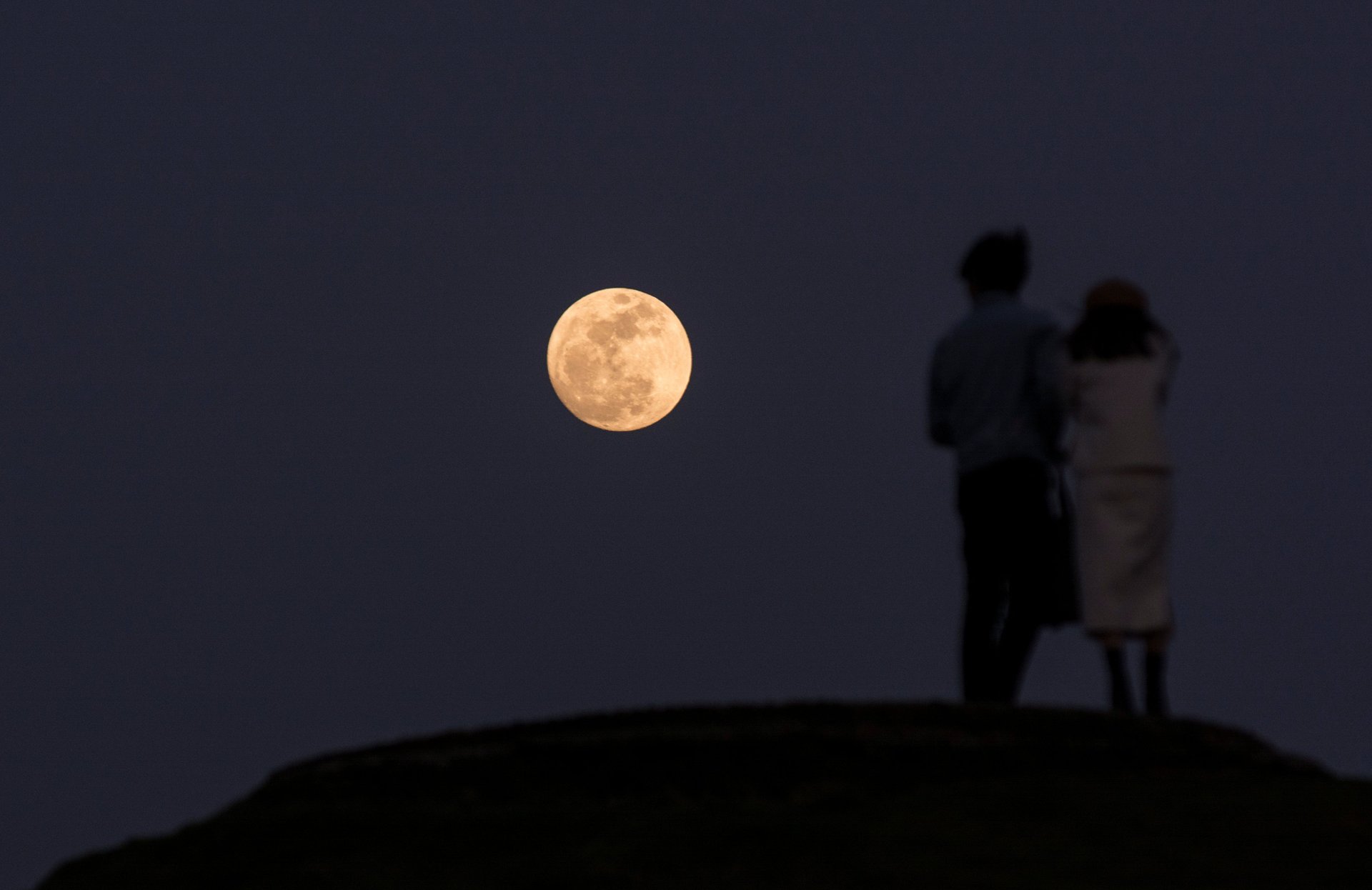Your minute-to-minute guide to the rare super blue blood moon
On Jan. 31, in the early morning hours in the Western Hemisphere and the evening in the Eastern, a visible supermoon—what we call a full moon at its closest orbital point to Earth—will coincide with a total lunar eclipse. As the second full moon of the month, it is also a blue moon.


On Jan. 31, in the early morning hours in the Western Hemisphere and the evening in the Eastern, a visible supermoon—what we call a full moon at its closest orbital point to Earth—will coincide with a total lunar eclipse. As the second full moon of the month, it is also a blue moon.
The celestial trifecta hasn’t happened above the Western Hemisphere in more than 150 years.
During a brief window of time—about five hours—the moon will cycle through several phases as it passes into and back out of perfect alignment with the Earth and sun. Viewers from eastern Asia through the Pacific to western North America will be in the moon’s path of totality. Viewers in eastern North America, eastern Europe, and western Asia will also catch a partial eclipse. Check this interactive map for more information on which phases of the eclipse you will be able to see.
Here’s a livestream from NASA:
And here’s a play-by-play of what to expect as you watch:

The hours before the eclipse: Super blue moon
Before the eclipse, viewers can enjoy a larger and brighter-than-average full moon. Visible supermoons appear 14% bigger and 30% brighter than full moons that occur at the farthest point in the moon’s orbit. The title “blue moon” has nothing to do with the moon’s actual color, referring only to the full moon’s second appearance within one month.
You don’t have to be in the eclipse’s path of totality to catch the super blue moon on Jan. 31. Anyone around the world will be able to savor its beauty—best viewed right after moonrise or before moonfall.
5:51am ET (10:51am UTC): Penumbral eclipse begins
At 5:51am US Eastern Time, the moon will begin its eclipse, but viewers won’t actually see the moon change shape. Instead, the observant viewer might notice the moon’s face darken as the Earth begins to block some of the sun’s light. Planning to wake up early to see the lunar event? We recommend skipping this phase to catch a little more sleep.
6:48am ET (11:48am UTC): Partial eclipse begins

This is when the good part starts. During the partial-eclipse phase, viewers will begin to see the moon disappear as the Earth continues to shield more sunlight. The rest of the visible moon will retain its coloring. For some viewers, including those in eastern North America, this will be the final phase they see before the moon drops below the horizon.
7:51am ET (12:51pm UTC): Full eclipse (and blood moon) begins
As the moon transitions from a partial to full eclipse, it will take on a reddish hue right as you think it’s about to completely disappear. This is because of the way the atmosphere bends the light, says NASA, and is why totally eclipsed moons are sometimes also called “blood moons.”
8:29am ET (1:29pm UTC): Maximum eclipse

You may not see much of a difference between the start and maximum of the total eclipse. Still, you can revel in the satisfaction of knowing that the moon is perfectly aligned with the sun and Earth for a fraction of a second—precisely at 8:29:51am ET— before the celestial bodies barrel onward on their respective paths.
9:07am ET (2:07pm UTC): Full eclipse ends
Once the eclipse reaches its maximum, the moon will transition back to a super blue moon following the steps in reverse order. As the full eclipse ends, it will lose its reddish hue and viewers will once again see a partially concealed moon.
10:11am ET (3:11pm UTC): Partial eclipse ends
Once the partial eclipse ends, the super blue moon will reappear fully formed with a slightly darkened face.
11:08am ET (4:08pm UTC): Penumbral eclipse ends
Finally, at the end of the penumbral phase, it will return to its full and dazzling brightness.

Correction: This story has been corrected to indicate that the coincidence of a super moon, blue moon and lunar eclipse had not occurred over the Western Hemisphere for more than 150 years. It had incorrectly suggested that the coincidence had not been seen worldwide in that timespan.